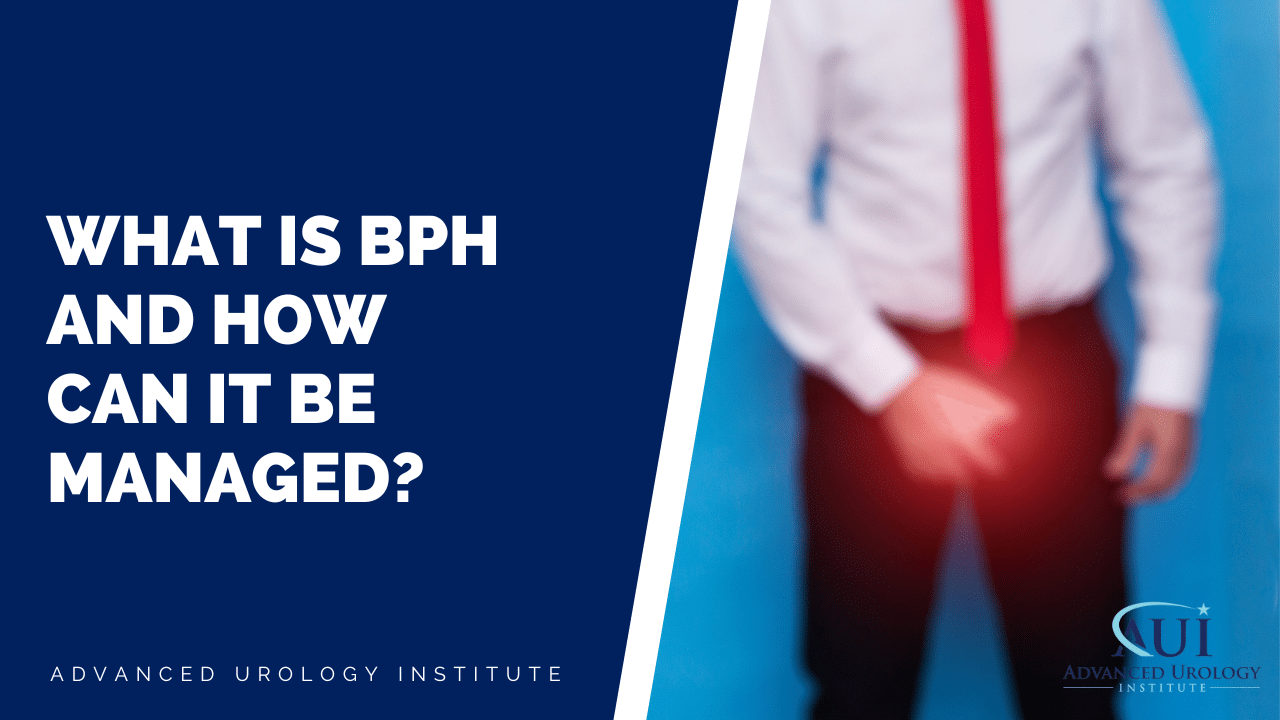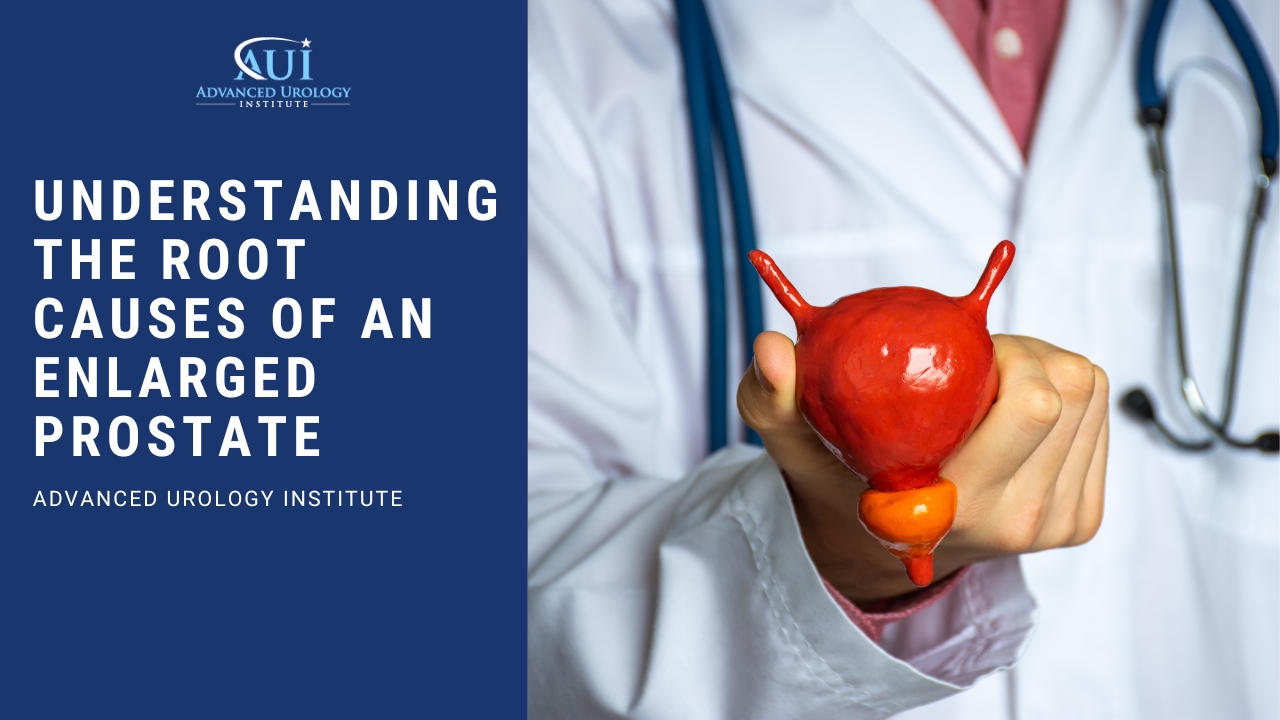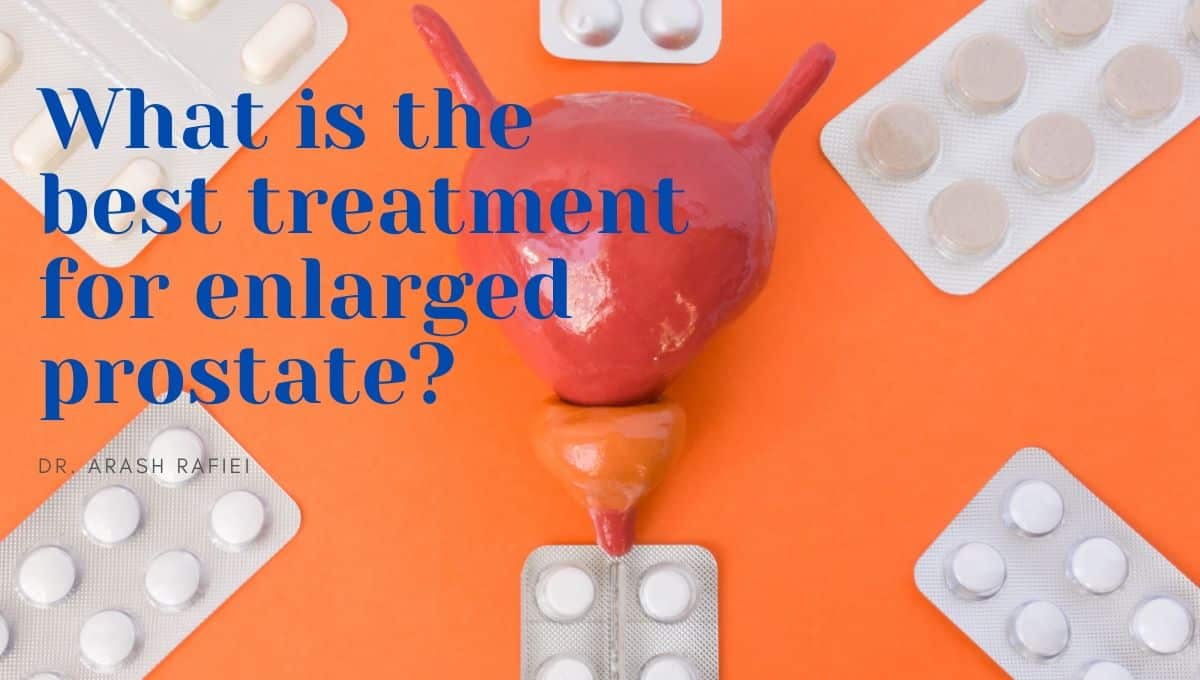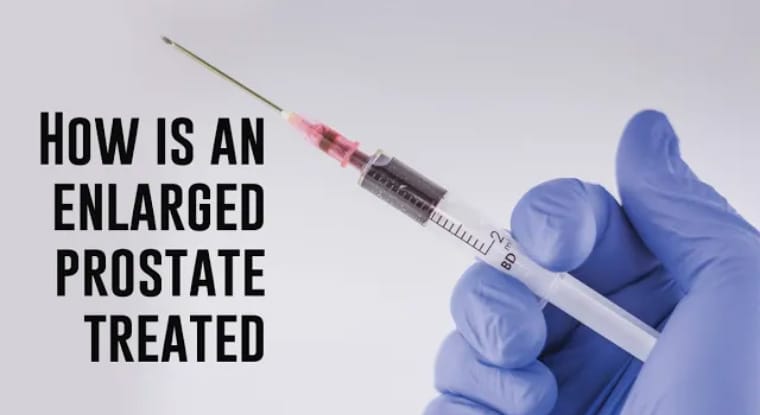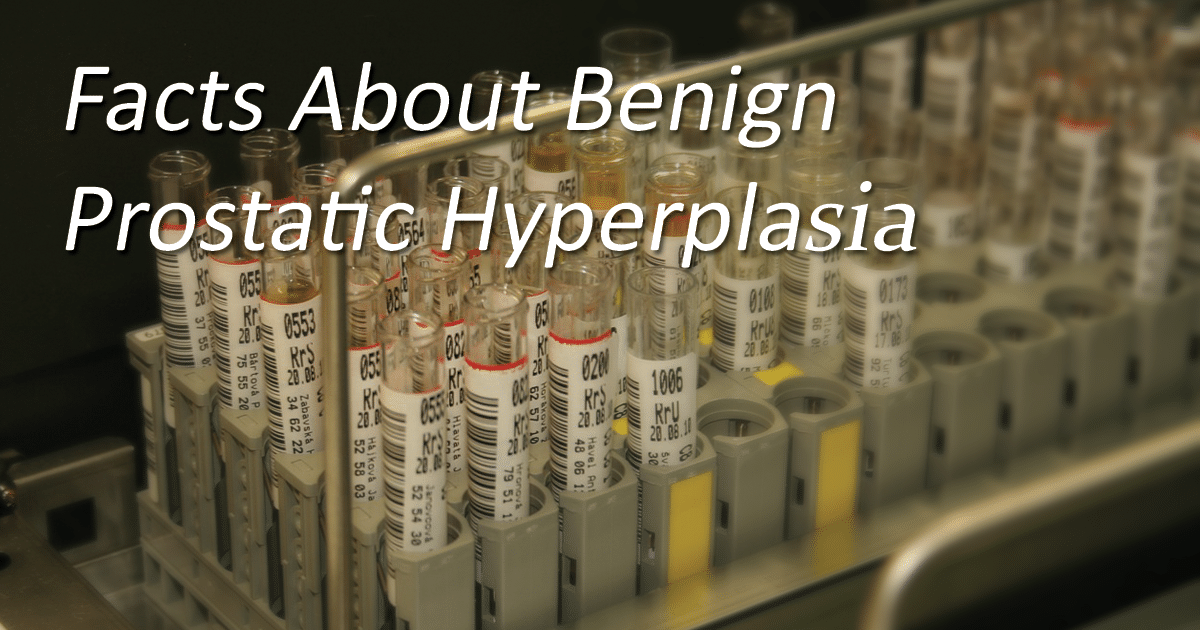Understanding Benign Prostatic Hyperplasia and its Treatment🩺🔄What Is BPH and How Can It Be Managed? At Advanced Urology Institute.
Continue readingWhat Do Your PSA Test Levels Really Mean?
Understand and be aware of what your PSA Test Levels Really Mean with Advanced Urology Institute. Don’t miss this eye-opening information.
Continue readingExploring the Diagnosis of Enlarged Prostate
Your doctor will diagnose an enlarged prostate by performing a physical exam, collecting a urine sample, and conducting various other tests that may include a urinalysis, ultrasound and blood test.
Continue readingUnderstanding the Root Causes of an Enlarged Prostate
Enlarged prostate, or benign prostatic hyperplasia, is a common condition experienced by men over the age of 45. While the exact cause of BPH is unknown, it is linked to age-related factors, genetics and certain medications.
Continue readingDon’t Let an Enlarged Prostate Go Undetected: Recognizing the Symptoms
Enlarged prostate, medically known as benign prostatic hyperplasia (BPH), is a common condition among men over the age of 50 in which the prostate grows larger than normal. It’s essential to understand the causes and symptoms of an enlarged prostate in order to take the necessary steps to diagnose and treat the problem.
Continue readingWhat Affects the Treatment Outcomes for Erectile Dysfunction with Dr. Bill Vanasupa
In this video, Dr. Bill Vanasupa, a board-certified urologist, discusses the effectiveness of medications for treating erectile dysfunction (ED). He notes that not all patients respond to medications and that the level of response can vary based on factors such as comorbidities, heart issues, and diabetes.
Continue readingTreatment Options That Are Available for Prostate Cancer – Dr. Amar Raval
In this video, Dr. Raval provides a clear and concise overview of the different treatment options for prostate cancer. It is important for patients to take an active role in their own care and work closely with their doctor to develop a treatment plan that is tailored to their individual needs and circumstances.
Continue readingTestosterone Therapy May Lower Prostate Cancer Incidence
What are the most common types of prostate disease?
The prostate gland, simply called the prostate, is a small, walnut-sized gland found at the base of the bladder of the male reproductive system. The prostate produces an alkaline fluid that leaves the urethra during ejaculation and helps
Continue readingBPH Enlarged Prostate Symptoms & Treatment
Treating Benign Prostatic Hyperplasia
My name is Amar J. Raval and I’m with Advanced Urology Institute. So one of the few things I specialize in my particular practice would be BPH or enlarged prostate. Whether it’s minimally invasive surgery like Urolift where you
Continue readingWhat is the best treatment for enlarged prostate?
All men can experience difficulties caused by an enlarging prostate. As Board Certified Urologist Dr. Arash Rafiei says, “All men have prostates, and as we age our prostates enlarge, some more than others.” Yet each man’s situation and health is different. The symptoms of an enlarged prostate will differ greatly between individuals and the best treatment option for one may not be the best option for another.
 For most men, the symptoms of an enlarging prostate include the slowing of their urine stream, pushing to urinate, and having to go to the bathroom frequently. Many men also have the feeling of not fully emptying their bladder after urination. In many cases, men will find that they need to wake up multiple times in the night to go to the bathroom.
For most men, the symptoms of an enlarging prostate include the slowing of their urine stream, pushing to urinate, and having to go to the bathroom frequently. Many men also have the feeling of not fully emptying their bladder after urination. In many cases, men will find that they need to wake up multiple times in the night to go to the bathroom.
Because the symptoms of an enlarging prostate differ for everyone, the first thing a urologist will ask is if the symptoms are bothering the patient. For some men, the symptoms, especially in their early stages, are not a problem. Men may notice that they urinate a little more often. It may also take a bit longer for them to urinate when they do. They may have to get up once or twice at night when they did not have to before. A lot of men see these symptoms as inconveniences that they can adapt to and live easily with. In these cases, the urologist and their patient will just want to continue to watch the situation and may not need to take any action.
For men with more severe prostate enlargement the symptoms may be causing issues that are negatively affecting their lives. In these cases, their urologist may recommend medical therapy. Urologists will recommend medication that will help slow the growth of the prostate and relax the muscles around the bladder. This treatment will help make urination easier for men you have been experiencing difficulties. Slowing prostate growth will also give the patient more time before more invasive treatment options become necessary.
For cases where medication does not produce successful outcomes there are plenty of procedures that can help. One common procedure is a transurethral resection of the prostate. For this procedure a resectoscope in inserted through the tip of the penis and into the urethra. The urologist uses this device to trim away excess tissue on the prostate, relieving pressure on the urethra. This is an outpatient procedure and often helps relieve the patient’s urinary problems.
Another procedure that is new and becoming more common for treating enlarged prostates is Urolift. For this cutting-edge treatment, a urologist separates and lifts the prostate from the urethra using a suture, relieving pressure on the urethra and allowing better urine flow. A plus side to Urolift is that, unlike in a transurethral resection, no prostate tissue is removed allowing for quicker recovery. Most patients return home the same day as the procedure.
Having plenty of treatment options is the key to successfully managing prostate enlargement. The urologists at Advance Urology Institute get to know and understand their patients in order to find the best option for each individual. For more information, visit the Advanced Urology Institute website.
Are Enlarged Prostate and Urinary Problems Common?
Normal part of aging
Just like gray hair, BPH is a natural result of getting older. But the trouble is, it is characterized by nightly trips to the bathroom which may become too frequent and eventually disrupt daytime routine. In some cases, an enlarged prostate may make it difficult for you to sit through a plane flight or meeting without getting up. So it can be a really annoying problem.
How does BPH occur?
As men grow older, the prostate gland becomes bigger with cells multiplying gradually and creating an enlargement that exerts pressure on the urethra. Since urine flows from the bladder through the urethra in men, an enlarged prostate blocks urine flow. With increased pressure on the urethra, the bladder is compelled to contract more forcefully to push urine through the body. With time, the bladder muscles become thicker, stronger and overly sensitive, beginning to contract even when only a small amount of urine is inside and triggering the need to pass urine frequently.
Eventually, bladder muscles fail to overcome the effect of a narrowed urethra and cannot empty all the urine. That means some urine is left inside the bladder every time after urination. When the bladder is continuously not emptied completely, there is an increased risk of urinary tract infections. Incomplete emptying also can lead to serious problems over time, including incontinence, blood in urine, bladder stones and acute urinary retention (the inability to urinate). In rare cases, incomplete emptying of the bladder may cause bladder damage or even kidney damage.
Symptoms of BPH include:
- Frequent urination
- Urgent urination
- Nocturia (frequent urination at night)
- Trouble starting urination
- Weak urine stream
- Urine stream that stops and starts
- Straining to urinate
- Inability to empty bladder completely
- Returning to the bathroom to urinate a few minutes after urinating
- Dribbling at the end of urination
In rare cases, signs of BPH also may include:
- Blood in urine
- Inability to urinate
- Urinary tract infection
A sudden and complete loss of ability to urinate is a medical emergency so you should see a urologist immediately. But you also should see a doctor whenever you are experiencing urinary symptoms, even if they are not really bothersome. Such visits to the doctor will ensure that the underlying causes of your condition are identified or ruled out. Remember that undiagnosed and untreated urinary problems may cause complete obstruction of the urinary tract, bladder and kidney damage and other serious problems.
At Advanced Urology Institute, we offer several safe and effective treatments for urinary problems. For instance, if you have BPH, we may:
- Offer a long course of antibacterial medication to treat bacterial prostatitis.
- Provide medication to improve your urine flow and relieve symptoms.
- Perform surgical procedures such as:
-
-
- (a) Transurethral resection of your prostate (TURP).
-
- (b) Transurethral incision of your prostate (TUIP).
-
- (c) PVP (green light laser resection) or HoLEP (holmium laser resection) of prostate.
-
- (d) Open prostatectomy for very large prostates.
-
- (e) Urolift (transurethral insertion of clips to separate prostate lobes).
-
- (f) Aqua-ablation (removal of prostate tissue with water jets).
- (g) Rezum therapy (removal of prostate tissue with steam).
-
So you don’t have to suffer embarrassing urinary symptoms when you have BPH. At AUI, we can fix your condition and enable you to live your life with freedom and confidence. For more information on our treatment options for BPH and other urinary problems, visit the Advanced Urology Institute website.
How is an enlarged prostate treated
In a majority of cases, the first approach after an initial diagnosis is that of watchful waiting. A urologist closely monitors the progression of the condition and advises the patient on what lifestyle changes,if any, he should make. Based on the outcome of this monitoring, a urologist may decide to move on to a particular course of treatment. This could be:
1. Medication
 A urologist can prescribe medication to reduce the symptoms of an enlarged prostate and also to control the enlargement. The available medications include:
A urologist can prescribe medication to reduce the symptoms of an enlarged prostate and also to control the enlargement. The available medications include:
(a) 5- alpha reductase inhibitors. These control prostate enlargement by inhibiting the hormonal changes that encourage prostate enlargement. They include Proscar and Avodart.
(b) Alpha Blockers. These function by relaxing the muscles in the bladder and in the prostate, making it easier to urinate, which eases one of the major symptoms of an enlarged prostate. They include Uroxatral and Rapaflo.
(c) Combination Therapy. In some instances, doctors prescribe a combination of alpha blockers and 5- alpha reductase inhibitors.
(d) Phosphodiesterase 5 Inhibitors. Ordinarily these are prescribed for the treatment of erectile dysfunction. But research indicates they also can be used in treatment of an enlarged prostate, with specific emphasis on the drug Cialis.
2. Minimally Invasive procedures
When medication does not work a urologist might prescribe a minimally invasive procedure. These ordinarily involve the insertion of an instrument such as a lighted scope, to remove or destroy excess prostate tissue. Procedures under this category include the Urolift, where a urologist lifts and staples the prostate to open up the urethra, and laser surgery, where a laser treatment is used to vaporize the excess tissue.
3. Surgery
In extreme cases, a prostatectomy may be done. This is a surgical procedure to remove the prostate gland. It is not recommended for the treatment of an enlarged prostate but it provides a last recourse in cases where the prostate is very large or where a patient has bladder stones.
An experienced urologist should be consulted as soon as the first symptoms of an enlarged prostate manifest. The patient and the urologist can select a suitable course of treatment. Learning about the likely symptoms of the condition is very important.
For more information about BPH and how to diagnose and treat it, visit the “Advanced Urology Institute” website.
Facts About Benign Prostatic Hyperplasia (BPH)
Risk Factors for Benign Prostatic Hyperplasia
There is no precise understanding of the causes of BPH. However, it is accepted that the main risk factor for BPH is advanced age. The condition is so common that it is reported that about 50 percent of all men over the age of 50 are likely to have it. Of that 50 percent, however, only about 10 percent are likely to need medical intervention. The prevalence of BPH among older males may be related to an increase in the production of estrogen and the proportionate decrease in testosterone as men grow older. Estrogen promotes the growth of prostatic cells which ultimately leads to an enlarged prostate. Other risk factors include a family history of BPH, heart and circulatory diseases and obesity.
Effects of Benign Prostatic Hyperplasia
The location of the prostate is such that the urethra passes through its middle and the bladder surrounds it. An enlarged prostate presses against the urethra and forms an obstruction to the smooth flow of urine as it comes from the bladder and flows through the urethra. For this reason, BPH is known to contribute to many urinary tract problems in men. These problems are manifested in one or more of the following symptoms:
- Sudden urge to urinate;
- Frequent need to urinate;
- Blood in the urine;
- Urine retention
- Weak or interrupted urine stream; and
- Inability to pass urine.
The symptoms may be mild and can be managed by watchful waiting. However, men experiencing a complete inability to urinate, painful and frequent need to urinate, blood in the urine or pain and great discomfort in the urinary tract area are advised to seek medical attention immediately.
Since the causes of BPH are not very well understood, it is not easy to prevent but it can be managed by frequent monitoring. It is recommended that men nearing 50 should establish and maintain a relationship with a good urologist. The Advanced Urology Institute is a good place to start for people new to this subject. They offer the necessary information and a staff of trained and experienced urologists to help you.
For more information about BPH and how to diagnose and treat it, visit the “Advanced Urology Institute” website.


